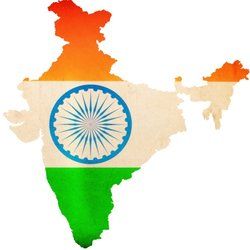Indian economic reforms were presented to parliament by President Pranab Mukherjee on behalf of Prime Minister Narendra Modi who came to power in May in a landslide victory, the strongest electoral mandate in three decades. The reforms are aimed at improving the country’s water supply and electricity infrastructure, as well as investments in “smart cities” and high-speed trains.
President Mukherjee said “We are passing through an extremely difficult phase. Putting the economy back on track is paramount.”
Narendra Modi’s new government will use private investment and public money to create employment for millions of Indians who enter the workforce annually as well as placing the control of inflation on top of its list of priorities.
Encouraging investment may not be so easy while the central bank keeps interest rates high in its quest to bring down inflation.
Ten million more people enter the workforce each year; the country needs 8% GDP growth to stop unemployment from rising. The previous government only managed to create 53 million jobs over a 7 year period, i.e. 7.57 million annually.
India’s GDP grew by just 4.6% (annualized) in Q1 2014, the same as in the previous quarter. The growth slowdown was mainly due to weak manufacturing, which declined by -1.4%. Over the last couple of years, the Indian economy has been burdened with high inflation, a volatile currency and shrinking foreign investment.
Stocks rose on the news
India’s new prime minister has encouraged investors who expect him to cut red tape and reverse the recent steep slowdown in economic growth. On Monday stocks reached a new high.
Mr. Mukherjee said the new government will aim to boost overseas investment, especially in defense firms, simplify tax laws, and offer incentives to encourage labor-intensive manufacturing. Modi would also like to see more private money invested in the coal sector.
Economists say Mr. Modi must streamline agricultural production, simplify the country’s tax code, and boost foreign investment.
The Modi administration pledged to:
- reserve 33% of parliamentary posts for women
- eradicate corruption,
- connect every school to the Internet
- have zero tolerance towards violence against women,
- take steps to curb hoarding and black marketing,
- create a healthcare service that is affordable to everybody,
- promote private investment in the defense sector,
- build nuclear power plants,
- place toilets in every home,
- establish public-private partnerships to modernize the country’s infrastructure,
- build a network of high-speed railways,
- develop low cost airports to improve connectivity to smaller areas, and
- build at least 100 “smart cities” with state-of-the art telecommunications.
However, there was no mention on how these pledges would be paid for or implemented.
High government budget deficit
At the end of the fiscal year (March 31), the government budget deficit reached 4.5% of gross domestic product (GDP). Mr. Modi’s spending capacity is limited unless he finds a way to raise more taxes or implement cuts in other areas.
Opposition parties accuse Mr. Modi’s Janata Party of concentrating too much on urban Indians and big business at the expense of poor people in rural areas. The new administration says it aims to eradicate poverty, partly by boosting farm yields with new technology.
Mr. Mukherjee said:
“With a firm belief that the first claim on development belongs to the poor, the government will focus its attention on those who need the basic necessities of life most urgently.”
Mr. Modi supporters expect him make good his “minimum government, maximum governance” pledge, to improve government efficiency, and speed up its decision-making process.

